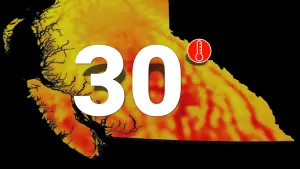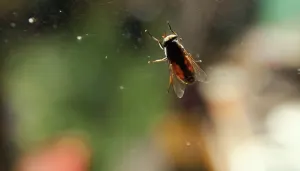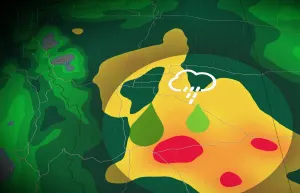
Bizarre alien 'spiders' spotted in 'Inca City' formation on Mars
They may sound like science fiction, but Mars' strange 'spiders' are very real, emerging from the frozen ground each spring.
Flying over the Martian south pole, two European satellites have spotted hundreds of 'spiders' sprouting up across a mysterious formation known as Inca City.
In the south polar region of Mars lies a complex series of roughly square and rectangular ridges and valleys whose origin still remains a mystery. Officially named Angustus Labyrinthus upon its discovery by NASA's Mariner 9 probe in the 1970s, its vague resemblance to ancient ruins on Earth prompted scientists give it the nickname Inca City.
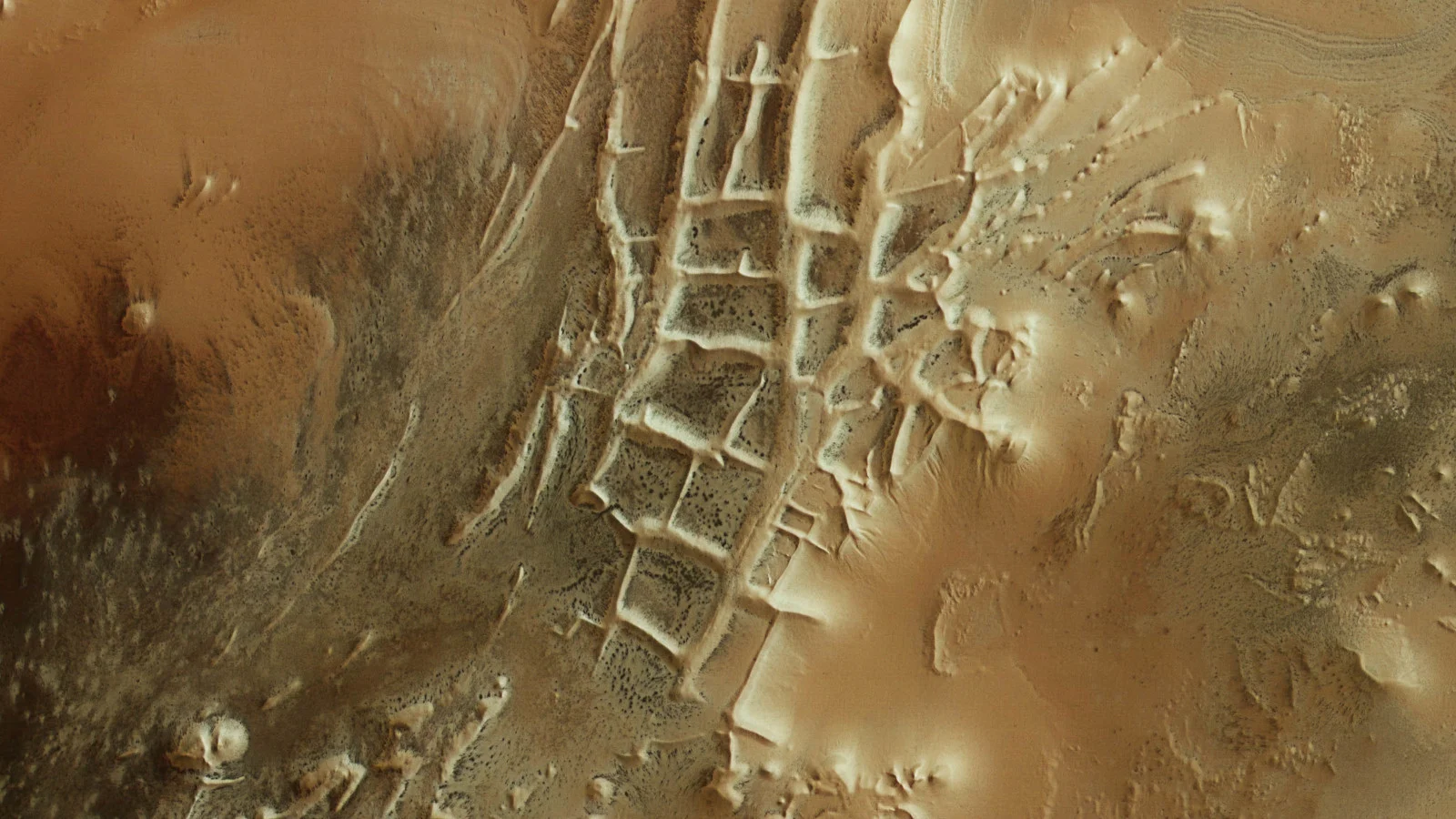
So-called "Inca City" on Mars is shown in this satellite image from Mars Express, taken on February 27, 2024. (ESA/DLR/FU Berlin (CC BY-SA 3.0 IGO))
Another odd feature of Mars is also visible in the above image: the valleys of Inca City are littered with hundreds of 'fuzzy' dark spots.
These are known as Martian spiders. However, they don't represent proof of life on the Red Planet.
"Rather than being actual spiders, these small, dark features form when spring sunshine falls on layers of carbon dioxide deposited over the dark winter months," says the European Space Agency (ESA).
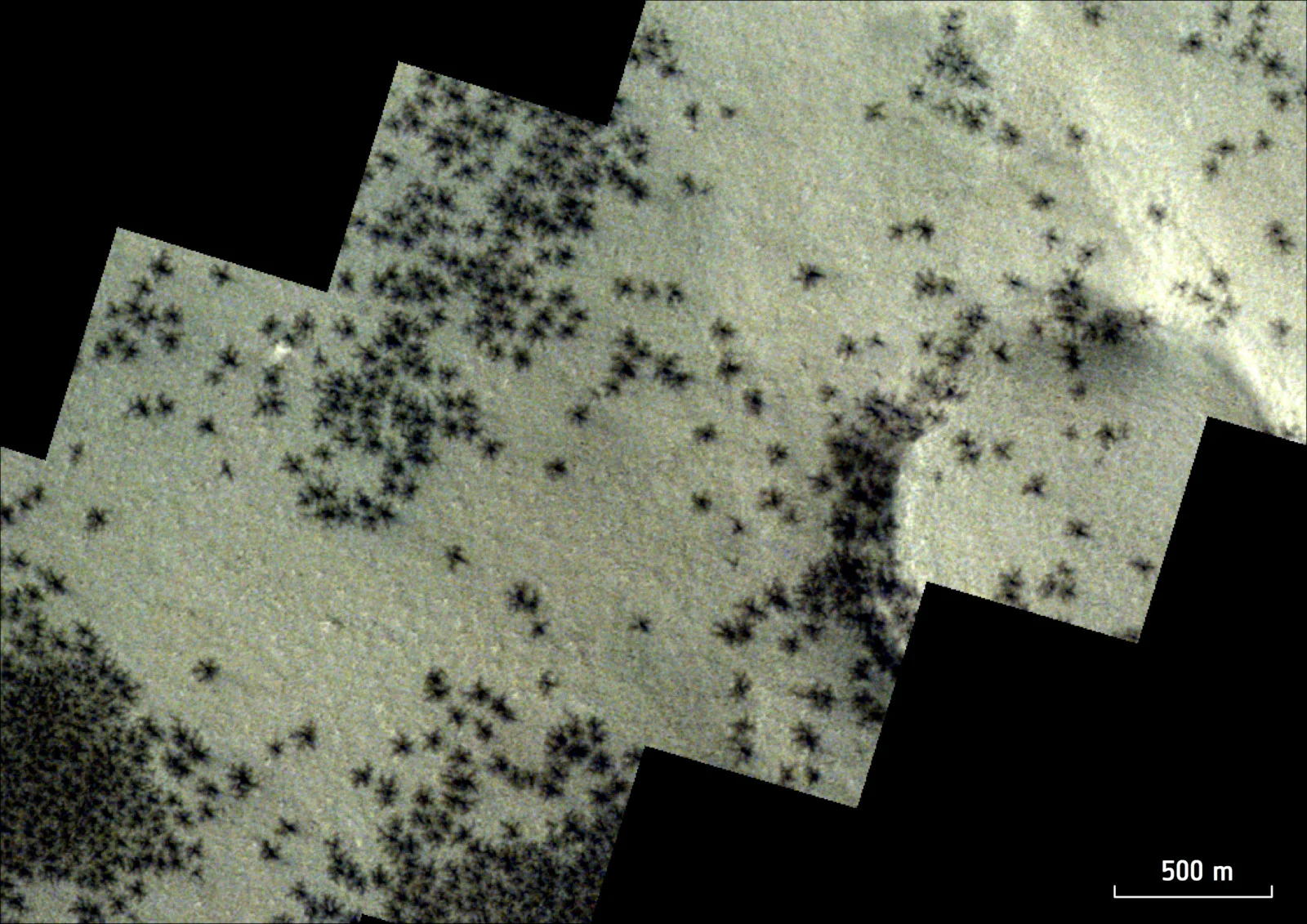
A close up look at one region of the Martian south pole from October 4, 2020, reveals 'spider' formations in greater detail. The overlapping images were taken by the CaSSIS (Colour and Stereo Surface Imaging System) instrument on the ESA's ExoMars Trace Gas Orbiter. (ESA/TGO/CaSSIS (CC BY-SA 3.0 IGO))
Carbon dioxide ice (aka dry ice) is mostly transparent. So, much of the sunlight that shines on this ice passes through to the ground below. The dark ground absorbs the sunlight, grows warmer, and causes the CO2 at the bottom of the ice layer to sublimate from solid into gaseous form.
"The sunlight causes carbon dioxide ice at the bottom of the layer to turn into gas, which subsequently builds up and breaks through slabs of overlying ice. The gas bursts free in Martian springtime, dragging dark material up to the surface as it goes and shattering layers of ice up to a metre thick," the ESA explained.
"The emerging gas, laden with dark dust, shoots up through cracks in the ice in the form of tall fountains or geysers, before falling back down and settling on the surface. This creates dark spots of between 45 m and 1 km across. This same process creates characteristic 'spider-shaped' patterns etched beneath the ice — and so these dark spots are a telltale sign that spiders may be lurking below."

A zoomed in section of the previous CaSSIS image shows off the details of these Martian 'spiders'. (ESA/TGO/CaSSIS (CC BY-SA 3.0 IGO))
Although these 'spiders' have been seen in imagery from Mars for decades now, scientists didn't discover how they were made until 2006.
"The key to figuring out the spiders and the spots was thinking through a physical model for what was happening," planetary geologist Phil Christensen, a professor at Arizona State University who has worked with NASA mission for years, said at the time of the discovery.
The key was the transparency of the CO2 ice.
As Christensen described it, if you were there, at the Martian south pole, you'd be standing on a thick slab of dry ice with the ground visible about a metre below your feet. The entire slab would actually be levitating ever so slightly above the surface, though, due to the pressure of the gas sublimating beneath it. You'd probably feel it vibrating through your boots.
"All around you, roaring jets of CO2 gas are throwing sand and dust a couple hundred feet into the air," Christensen explained.
It's that sand and dust that go on to produce the dark spot that forms the 'body' of the spider. As for the legs, those appear as the CO2 gas rushing to escape in the geyser carves grooves into the ground under the ice slab.







